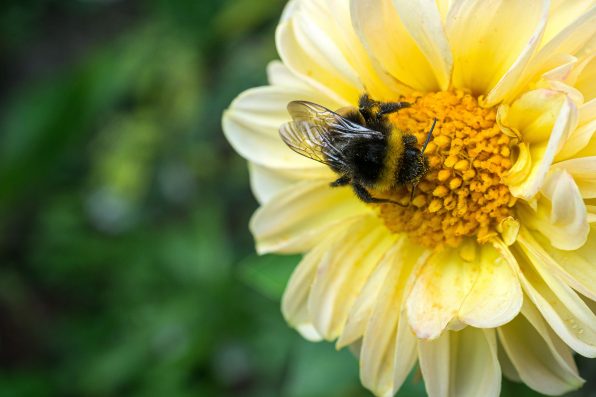The rusty patched bumblebee, named for the reddish-brown smudge on the backs of male and worker bees of the species, is endangered. Scientists are studying the species to try and find ways to work toward their recovery.
According to the U.S. Fish and Wildlife Service, they were once common across the eastern United States and Canada, but their populations have dwindled by almost 90 percent over two decades.
Now, they are only found in the Upper Midwest and Northeast United States. The rusty patch became the first bumblebee in the United States to be listed as endangered in 2017.
Scientists are collecting genetic material from rusty patched bumblebees by snipping off tiny pieces of their legs. This is a very common method and does not harm the creatures. Each sample is then sent to a lab, where DNA analysis will be conducted.
The tests will assist in estimating the number of colonies, patterns of inbreeding and the health and genetic diversity of rusty patched bumblebee populations. The whole initiative began in 2020 when bumblebee researchers held a meeting in Minnesota. They aimed to identify conservation tools that could help save the species.
After completing a comprehensive genetic study of the bumblebees, they found several ways to aid the conservation of the species. However, concerns were also raised about their ability to survive. The study showed that the number of rusty patched bumblebees was low, even in places they frequently inhabited.
“We’ve seen the Upper Midwest as the stronghold of the species, but what we’ve seen from the genetic data is that even within these strongholds for the species, they are still far fewer colonies than we might have expected,” John Mola, the lead author of the study and an ecologist at Colorado State University, said.
Bumblebee populations are measured by colonies instead of individuals because only queens can create offspring.
Each spring, queen bees will come out of hibernation to make nests, where they produce female workers whose purposes are to forage, nurse larvae, and protect the nest. The queens switch to producing reproductive individuals later in the summer.

Sign up for Chip Chick’s newsletter and get stories like this delivered to your inbox.


